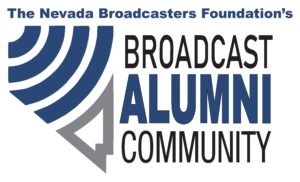Every four years, the FCC is supposed to conduct a review of its local broadcast ownership rules – the rules that govern the number of radio or television stations in a market in which one person or entity may have an “attributable” interest (some form of control rights defined under very complicated FCC attribution rules). The FCC is supposed to do this regular assessment of these local ownership rules to determine if they continue to be necessary in the public interest as a result of changes in competition. The last quadrennial review, which commenced in 2018, was not completed by the FCC until December 2023 when it released an order that, for all practical purposes, concluded that there had been no changes in the competition faced by broadcast stations. In the 2023 order (which we summarized here), the Commission actually tightened the rules for television stations, and it left the rules for radio unchanged despite the significant competition from digital media that had exploded since the last review was completed (see for instance our article here on the explosion of digital competition and its effect on over-the-air radio). Appeals of the 2023 decision were only resolved in July (see our article here). With the decision on the appeal complete, the FCC Chair this week announced that the next Quadrennial Review would now begin in earnest.
The next review, the 2022 Quadrennial Review, was actually started in late 2022 (even before the 2018 review was completed) with the release of a Public Notice (see our article here). But that Public Notice only asked very general questions about the state of competition in the broadcast industry, and the previous administration took no further action after releasing the Public Notice. This week, FCC Chairman Carr, in his blog post setting out the issues to be considered at the FCC’s September 30th regular monthly meeting, stated that a 2022 Quadrennial Review Notice of Proposed Rulemaking would be on the agenda. That announcement was followed with a public draft of the NPRM that will be considered at the September 30 meeting. While it is possible that some changes may be made in the draft, in practice these drafts are generally adopted with few significant modifications. Thus, we now have an idea of the issues to be considered in the 2022 Review.
The NPRM sets out three principal areas of inquiry, and these really are the same areas that were considered in the 2018 review. First, the FCC will consider whether changes to the local radio ownership rules are appropriate as a result of competition changes. Next, the FCC will consider potential changes to the local television ownership rules. Finally, the FCC will consider the dual network rule which prohibits ownership combinations of any two of the top 4 TV networks. Other than setting out these general areas for consideration, the NPRM does not advance specific proposals for rule changes, instead asking for public comment as to what those changes should be.
For both radio and television, the FCC asks whether digital media is a true competitor to over the air broadcast facilities. It asks whether competition from digital sources could imperil the local service provided by over the air broadcast stations. It also asks that, if digital media is considered to be a competitor to over the air broadcasting, how should that digital competition be taken into account in establishing new ownership limits? As one owner is currently allowed to own only two TV stations in a market, if digital is considered a competitor, how should that affect the numerical limit on station ownership for television? Note that, for TV, the July court decision on the appeals of the 2023 Order resolved one of the most contentious issues by vacating the rule that prohibited combinations of two of the top 4 TV stations in any market (a decision that will likely become effective in about a month). For radio, where the court decision made no changes, the rules still provide that, in the largest markets, one owner can hold interests in only 8 radio stations (only five of which can be FM stations). The FCC asks how would recognition of the competitive nature of digital media affect those numerical limits? The NPRM does not offer any answers to these questions other than to pose the more general question of whether the local ownership rules are even necessary at all given the current state of competition.
Other specific questions asked by the NPRM include whether the separate limits on the number of AMs and FMs that can be owned in a market should continue (or whether, if the rules are retained, there should simply be an absolute limit on radio ownership no matter the band on which those stations operate). For TV, one of the specific questions asked is whether the effect on retransmission consent fee negotiations should be taken into account in the analysis of how many stations one party can own in a market – do combinations of local stations give the TV broadcaster too much power in negotiations with MVPDs over carriage rights?
While posing many of the same kinds of questions about the dual network role, the FCC also uses the NPRM to raise questions about the relationship between broadcast networks and their affiliates, questioning whether a relaxation of the rule that prohibits the combination of two of the top-4 TV networks would affect the balance of power between a network and its affiliated stations. The Commission asks if changes in the dual network role would affect localism by giving the networks too much power over their affiliates. The Commission also asks whether, if the rule is retained, other broadcast television networks beyond the top 4 should be considered under the dual network rule.
Chairman Carr has indicated in the past that he believes the ownership rules are outdated – a relic of a different media marketplace – yet the NPRM does not reflect those views. Instead, it simply asks what should be done with the rules, seeking comment from the public as to the changes that should be made. Broadcasters should carefully review the Notice of Proposed Rulemaking and formulate their comments to help the FCC decide what to do with these ownership rules which, as we have noted before, are largely unchanged from those adopted in the Telecommunications Act of 1996 prior to the advent of the plethora of digital competitors that now dominate the media landscape. Chairman Carr has stated that the impact of digital media competition was so great that this was a “break glass moment” demanding immediate relaxation of the ownership rules. The NPRM appears to be looking for support to be included in the record that is necessary to justify the relaxation that Chairman Carr thought was so warranted.
The FCC will consider this draft NPRM at its September 30 meeting. If adopted as currently written, comments will be due 30 days after the NPRM has been published in the Federal Register. From this relatively short comment period, it appears that this Commission wants to move quickly in its consideration of these issues. Broadcasters should take this opportunity to consider filing comments that will let the FCC know your opinion as to what should be done to change the ownership rules to reflect the state of today’s media marketplace.


